
Current Research
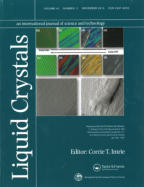
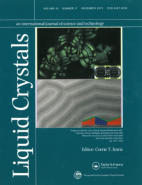

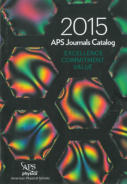
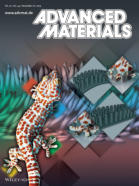
Recent Cover Images
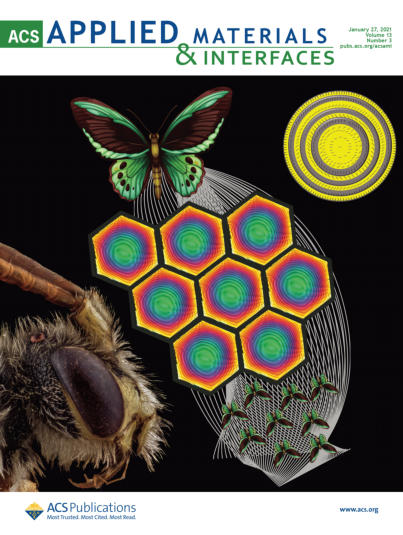
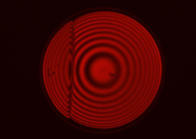
Electro-Active Ionic Elastomers
Motivated
by
the
low
voltage
driven
actuation
of
ionic
Electroactive
Polymers
(iEAPs)
[1]
[2],
recently
we
began
investigating
ionic
elastomers.
In
this
talk
I
will
discuss
the
preparation,
physical
characterization
and
electric
bending
actuation
properties
of
two
novel
ionic
elastomers;
ionic
polymer
electrolyte
membranes
(iPEM),
and
ionic
liquid
crystal
elastomers
(iLCE).[3]
Both
materials
can
be
actuated
by
low
frequency
AC
or
DC
voltages
of
less
than
1
V.
The
bending
actuation
properties
of
the
iPEMs
are
outperforming
most
of
the
well-developed
iEAPs,
and
the
not
optimized
first
iLCEs
are
already
comparable
to
them.
Ionic
liquid
crystal
elastomers
also
exhibit
superior
features,
such
as
the
alignment
dependent
actuation,
which
offers
the
possibility
of
pre-programed
actuation
pattern
at
the
level
of
cross-linking
process.
Additionally,
multiple
(thermal,
optical
and
electric)
actuations
are
also
possible.
We
also
study
issues
with
compliant
electrodes
and
possible
soft robotic applications.
[1]
Y.
Bar-Cohen,
Electroactive
Polyer
Actuators
as
Artficial
Muscles:
Reality,
Potential
and
Challenges, SPIE Press, Bellingham, 2004.
[2] O. Kim, S. J. Kim, M. J. Park, Chem. Commun. 2018, 54, 4895.
[3] C. Feng, C. P. H. Rajapaksha, J. M. Cedillo, C. Piedrahita, J. Cao,V. Kaphle, B. Lussem, T.
Kyu, A. I. Jákli, Macromol. Rapid Commun. 2019, 1900299.

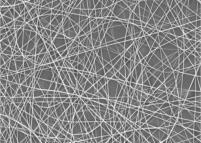
Responsive Liquid Crystal/Polymer Fibers
Airbrushing
of
a
homogeneous
LC
and
polymer
solution
to
make
LC/polymer
as
well
electro-
spinning
and
force
spinning
are
techniques
via
which
piezoelectric
and
responsive
fibers
are
obtained.
Quantitative
measurements
of
the
optical
response
of
liquid
crystal
(LC)/polymer
composite
fiber
mats
to
toluene
and
acetone
vapors
have
been.
Reported
Our
analyses
in
comparison
with
control
measurements
of
pure
LC
film
and
polymer
fiber
mats
show
that
the
chemicals
can
pass
through
the
polymer
sheath
of
the
fibers
and
be
absorbed
by
the
LC
in
the
core.
This
absorption
changes
the
optical
properties
of
the
fiber
mats
which
can
be
used
to
produce
sensitive
and
reversible
detection.
The
sensitive
response
at
low
concentrations
of
both
acetone
and
toluene
demonstrates
the
feasibility
of
using
these
fibers
for
highly
sensitive
and
specific
sensors
for
volatile organic compound detection.
A
simple
process
is
demonstrated
to
clad
conventional
monofilament
fibers
with
low
molecular
weight
liquid
crystals
stabilized
by
an
outer
polymer
sheath.
The
fibers
retain
the
responsive
properties
of
the
LCs
in
a
highly
flexible/drapable
format.
The
monofilament
core
makes
these
fibers
much
more
rugged
with
a
magnified
response
to
external
stimuli
when
compared
to
previously reported LC core fibers produced by electrospinning or airbrushing.
The microscopic structure and the optical properties of round and flattened fibers are reported.
The
sensitivity
of
the
response
of
individual
fibers
can
be
tuned
over
a
broad
range
by
varying
the
composition
of
the
liquid
crystals.
Complex
fabrics
can
be
easily
woven
from
fibers
that
respond
to
different
external
stimuli,
such
as
temperature
variation,
chemicals
and
pressure.
The
fabrics
can
be fashioned into garments that can sense and report the state of health or the environment.
[1]
Yu
Guan,
Dena
Mae
Agra-Kooijman,
Shaohai
Fu,
Antal
Jákli,
and
John
L.
West,
“Responsive
Liquid-Crystal-Clad
Fibers
for
Advanced
Textiles
and
Wearable
Sensors”,
Advanced
Materials, 1902168 (2019); DOI: 10.1002/adma.201902168
[2]
Md
Mostafa,
Deña
Mae
Agra-Kooijman,
Kelum
Perera,
Alex
Adaka,John
L.
West
and
Antal
Jákli,
“Colloidal
Latex
/
Liquid
Crystal
Coatings
for
Thermochromic
Textiles”,
Colloid
and
Interface
Science Communications, 52, 100693, 2023, https://doi.org/10.1016/j.colcom.2022.100693,
Biological Sensing With Liquid Crystal
Liquid-crystal–based
biosensors
utilize
the
high
sensitivity
of
liquid-crystal
alignment
to
the
presence
of
amphiphiles
adsorbed
to
one
of
the
liquid-crystal
surfaces
from
water.
They
offer
inexpensive,
easy
optical
detection
of
biologically
relevant
molecules
such
as
lipids,
proteins,
and
cells. The techniques use linear or circular polarizers to analyze the alignment of the liquid crystal.
[1]
Kelum
Perera,
Thiloka
M.
Dassanayake,
Mahesha
Jeewanthi,
H.
Nilanthi
Padmini,
Songping
D.
Huang,
Edgar
Kooijman,
Elizabeth
Mann,
and
Antal
Jákli,
“Liquid
Crystal-based
Detection
of
Antigens with ELISA Sensitivity”, Advanced Materials Interfaces, 2200891 1-8 (2022)
Liquid Crystal Spherical Caps in Magnetic & Electric Fields
We
carry
out
both
experimental
and
theoretical
studies
of
the
director
structure
in
magnetic
and
electric
fields
of
nematic
liquid
crystal
drops
forming
spherical
cap
shape,
with
initial
director
structure
perpendicular
to
the
air
and
glass
boundaries.
At
sufficiently
high
magnetic
or
electric
fields
a
metastable
inversion
wall
forms
in
the
middle
of
the
drop
perpendicular
to
the
fields
and
then
moves
outward.
In
DC
magnetic
and
low-frequency
electric
fields,
the
wall
direction
is
unchanged
during
the
motion,
while
under
high
frequency
(>120Hz)
electric
fields
the
defect
wall
rotates
parallel
to the field.
The
linear
displacement
of
the
electric
field-induced
defect
wall
combined
with
the
threshold
for
director
deformation
enables
to
determine
both
the
bend
elastic
constant
and
the
rotational
viscosity.
Drops
with
uniform
director
structure
can
be
used
as
tunable
optical
lenses,
where
the
focal
length
can
be
controlled
by
light
polarization,
viewing
angle,
magnetic,
or
electric
fields.
Uniform
electric
field-induced
generation,
rotation,
and
linear
movement
of
defect
walls
is
a
unique
phenomenon in soft matters.
Articles Published:
[1]
P.
Salamon,
Z.
Karaszi,
V.
Kenderesi,
Á.
Buka,
A.
Jákli,
Liquid
crystal
spherical
caps
in
magnetic fields, Phys. Rev. Res. 2 (2020), https://doi.org/10.1103/physrevresearch.2.023261 023261.
[2]
Z.
Karaszi,
P.
Salamon,
Á.
Buka,
A.
Jákli,
Lens
shape
liquid
crystals
in
electric
fields,
Journal
of
Molecular
Liquids
334
(2021)
116085,
https://doi.org/10.1016/j.molliq.2021.116085
0167-
7322.
[3]
Zoltán
Karaszi,
Marcell
Máthé,
Péter
Salamon,
Ágnes
Buka,
Antal
Jákli;
“Electric
field
induced
buckling
of
inversion
walls
in
lens-shape
liquid
crystal
droplets”,
Journal
of
Molecular
Liquids
365, 120177-1-7 (2022)
[4]
Zoltán
Karaszi,
Marcell
Máthé,
Péter
Salamon,
Ágnes
Buka,
Antal
Jákli;
“Lens-shaped
nematic
liquid
crystal
droplets
with
negative
dielectric
anisotropy
in
electric
and
magnetic
fields”,
Liquid Crystals, DOI: 10.1080/02678292.2022.2134594, published online (October 24, 2022)
[5]
Ágnes
Buka,
Péter
Salamon,
Marcell
Máthé,
Zoltán
Karaszi,
Antal
Jákli,
“Nematic
liquid
crystals
in
lens
shape
geometry”,
Liquid
Crystals
(Invited
paper)
(January
30,
2023),
10.1080/02678292.2023.2168307
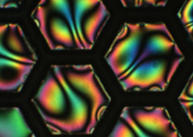

Flexo-ionic Effect of Ionic Liquid Crystal Elastomers (iLCE)
Flexoelectricity
that
couples
electric
polarization
with
strain
gradient
has
been
studied
independently
in
both
crystals
and
liquid
crystals
since
the
1960s[1,2].
In
crystalline
solids
the
electric
polarization
is
attributed
to
the
electron
displacenet
of
centrosymmetric
crystals.
In
liquid
crystals
it
arises
when
the
director
of
anisometric
(pear-
or
bent-shape)
molecules
have
splay
or
bend deformations resulting in a net polarization.
Recently,
a
new
class
of
electromechanical
coupling
is
introduced
which
is
very
similar
to
the
flexoelectric
effect
except
for
that
the
induced
polarization
is
due
to
displacement
of
differently
sized
of
cations
and
anions
[3–7].
These
materials
possess
very
large
flexo-ionic
coefficients
(29
–
323
μC/m), Such a large effect may be useful in soft robotics, sensors, and micro power generation.
Motivated
by
those
work,
we
study
flexo-ionic
effects
of
a
new
class
of
materials,
ionic
liquid
crystal
elastomers.
We
investigate
the
material
properties
(elastic
modulus,
phase
transition,
ionic
conductivity, morphology) and the alignment dependence of flexo-ionic coefficients.
[1] Mayer, R.M. Piezoelectric Effects in Liquid Crystals. Phys. Rev. Lett. 1969, 22, 25–29.
[2]
Kogan,
S.M.
Piezoelectric
effect
during
inhomogeneous
deformation
and
acoustic
scattering of carriers in crystals. Sov. Phys. Solid State 1964, 5, 2069.
[3]
Rajapaksha,
C.P.H.;
Feng,
C.;
Piedrahita,
C.;
Cao,
J.;
Kaphle,
V.;
Lüssem,
B.;
Kyu,
T.;
Jákli,
A.
Poly(ethylene
glycol)
Diacrylate
Based
Electro‐Active
Ionic
Elastomer.
Macromol.
Rapid
Commun. 2020, 41, 1900636, doi:10.1002/marc.201900636.
[4]
Feng,
C.;
Rajapaksha,
C.P.H.;
Cedillo,
J.M.;
Piedrahita,
C.;
Cao,
J.;
Kaphle,
V.;
Lussem,
B.;
Kyu,
T.;
Jákli,
A.I.
Electro-responsive
Ionic
Liquid
Crystal
Elastomers.
Macromol.
Rapid
Commun.
2019, 1900299, doi:DOI: 10.1002/marc.201900299.
[5]
Piedrahita,
C.R.;
Yue,
P.;
Cao,
J.;
Lee,
H.;
Rajapaksha,
C.P.;
Feng,
C.;
Jákli,
A.;
Kyu,
T.
Flexoelectricity
in
Flexoionic
Polymer
Electrolyte
Membranes:
Effect
of
Thiosiloxane
Modification
on
Poly(ethylene
glycol)
Diacrylate
and
Ionic
Liquid
Electrolyte
Composites.
ACS
Appl.
Mater.
Interfaces
2020, 12, 16978–16986, doi:10.1021/acsami.0c02328.
[6]
Albehaijan,
H.A.;
Piedrahita,
C.R.;
Cao,
J.;
Soliman,
M.;
Mitra,
S.;
Kyu,
T.
Mechanoelectrical
Transduction
of
Polymer
Electrolyte
Membranes:
Effect
of
Branched
Networks.
ACS Appl. Mater. Interfaces 2020, 12, 7518–7528, doi:10.1021/acsami.9b15599.
[7]
A.
Albehaijan,
H.;
Cao,
J.;
R.
Piedrahita,
C.;
Jákli,
A.;
Kyu,
T.
Role
of
Cationic
Size
and
Valency
in
Mechanoelectrical
Transduction
of
Ion-Containing
Polymers.
ACS
Sustain.
Chem.
&
Eng. 2021, 0, doi:10.1021/acssuschemeng.0c08252.

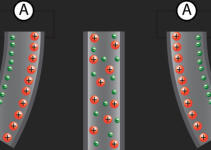
Microlens Arrays
The
LC-based
microlens
array
has
attractive
applications
in
optoelectronics,
integrated
optics,
optical
fiber
switches,
information
processing,
optical
communications,
and
imaging
processing
etc.
Most
of
the
Liquid
crystal
microlens
arrays
required
very
delicate
fabrication
process.
We
study
cholesteric
liquid
crystal
microlens
arrays
with
different
configurations
which
shows
unique
geometrical
and
optical
properties.
Our
focus
is
to
develop
simple,
cost-effective
fabrication
process
for
microlenses
using
different
cholesteric
liquid
crystal
mixtures
and
investigate
the
optical
capabilities of the microlenses for various applications.
[1]
K.
Perera,
A.
Nemati,
E.
Mann,
T.
Hegmann
and
A.
Jákli,
”Converging
microlens
array
using
nematic
liquid
crystals
doped
with
chiral
nanoparticles”,
ACS
Applied
Materials
and
Interfaces,
13, 4574-4582 (2021); DOI: https://dx.doi.org/10.1021/acsami.0c21044 -Cover Picture
[2]
Kelum
Perera,
H
Nilanthi
Padmini,
Elizabeth
Mann
and
Antal
Jákli,
“Polymer
Stabilized
Paraboloid
Liquid
Crystal
Microlenses
with
Integrated
Pancharatnam–Berry
Phase”,
Advanced
Optical
Materials, 2101510 (1-8) (2021)
[3]
Kelum
Perera,
Nilanthi
Haputhantrige,
Md
Sakhawat
Hossain
Himel,
Md
Mostafa,
Alex
Adaka,
Oleg
D.
Lavrentovich
and
Antal
Jákli,
“Electrically
tunable
chiral
liquid
crystal
lens
arrays”
SPIE 12658-30 (August 1.2023)
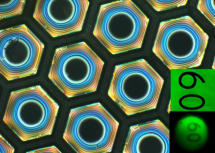
Textiles and Wearable Sensors
Based
on
a
simple
process
we
proposed
recently[1]
to
clad
conventional
monofilament
fibers
with
liquid
crystal/polymer
composites,
we
are
developing
fibers
that
retain
the
responsive
properties of the LCs but in a highly flexible/drapable format.
The
monofilament
core
makes
these
fibers
much
more
rugged
with
a
magnified
response
to
external
stimuli
when
compared
to
previously
reported
LC-core
fibers
produced
by
electrospinning
or
airbrushing.
The
sensitivity
of
the
response
of
individual
fibers
can
be
tuned
over
a
broad
range
by
varying
the
composition
of
the
LCs.
Complex
fabrics
can
be
easily
woven
from
fibers
that
respond
to
different
external
stimuli,
such
as
temperature
variation,
chemical
concentrations,
and
pressure.
The
fabrics
can
be
fashioned
into
garments
that
can
sense
and
report
the
state
of
health
of
the
wearer or the status of their environment.
[1]
Guan
Y,
Agra-Kooijman
DM,
Fu
S,
Jákli
A,
West
JL
(2019)
Responsive
Liquid-Crystal-Clad
Fibers
for
Advanced
Textiles
and
Wearable
Sensors.
Advanced
Materials,
:1902168-1–5.
https://doi.org/10.1002/adma.201902168
[2]
Deña
Mae
Agra-Kooijman,
Md
Mostafa,
Mourad
Krifa,
Linda
Ohrn-McDaniel,
John
L.
West,
Antal
Jákli,
Liquid
Crystal
Coated
Yarns
for
Thermo-Responsive
Textile
Structures,
Fibers,
11,
3
(2023); https://doi.org/10.3390/fib1101000

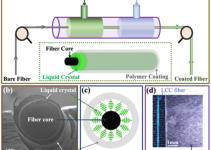

Ferroelectric Nematic Liquid Crystals
The
recently
discovered
ferroelectric
nematic
(N_F)
liquid
crystals
(LCs)
with
over
0.04
C/m2
ferroelectric
polarization
and
104
relative
dielectric
constants,
coupled
with
sub-millisecond
switching,
offer
potential
applications
in
high-power
super
capacitors
and
low
voltage
driven
fast
electro-optical devices.
We
studied
electrical,
optical,
and
electro-optical
studies
of
a
ferroelectric
nematic
LC
material
doped
with
commercially
available
chiral
dopants.
While
the
N_F
phase
of
the
undoped
LC
is
only
monotropic,
the
chiral
N_F
phase
is
enantiotropic,
indicating
a
chirality
induced
stabilization
of
the
polar
nematic
order.
Compared
to
undoped
N_F
material,
a
remarkable
improvement
of
the
electro-optical
switching
time
is
demonstrated
in
the
chiral
doped
materials.
The
color
of
the
chiral
mixtures
that
exhibit
a
selective
reflection
of
visible
light
in
the
chiral
N_F
phase,
can
be
reversibly
tuned
by
0.02-0.1V/µm
in-plane
electric
fields,
which
are
much
smaller
than
typically
required
in
full-color
cholesteric
LC
displays
and
do
not
require
complicated
driving
scheme.[1]
The
fast
switchable
reflection
color
at
low
fields
has
potential
applications
for
LC
displays
without
backlight,
smart windows, shutters and e-papers.
We
studied
the
physical
properties
of
a
new
compound,
4-nitrophenyl
4-[(2,4-
dimethoxylbenzoyl)oxy]-2-fluorobenzoate
(RT11001)
synthesized
by
RobertTwieg.
This
material
exhibits
multiple,
highly
polar,
ferroelectric
nematic
phases
that
have
not
been
previously
reported.
We
employ
a
wide
range
of
physical
characterization
methods
including
differential
scanning
calorimetry
(DSC),
mass
density
measurement,
optical
birefringence,
polarizing
optical
microscopy
(POM),
dielectric
spectroscopy,
electric
current
analysis,
electro-optical
switching,
small-angle
and
wide-angle
x-ray
scattering
measurements
to
show
that
RT11001
has
multiple,
distinct
ferroelectric
phases.
We
argue
that
the
highest
temperature
phase
is
a
polar
nematic
fluid
with
non-polar
smectic
clusters.
Directly
below
appears
to
be
a
transition
to
another
polar
nematic
phase
containing
polar
positionally
ordered
clusters.
Lastly,
there
are
indications
of
an
additional,
polar
biaxial
liquid
crystal phase at lower temperatures. [2]
We
presented
experimental
results
and
theoretical
considerations
of
novel
electromechanical
effects
of
ferroelectric
nematic
liquid
crystal
droplets
coexisting
with
the
isotropic
melt.
We
find
that
the
droplets
have
flat
pancake-like
shapes
that
are
thinner
than
the
sample
thickness
as
long
as
there
is
room
to
increase
the
lateral
droplet
size.
In
the
center
of
the
droplets
a
wing-shaped
defect
with
low
birefringence
is
present
that
moves
perpendicular
to
a
weak
in-plane
electric
field,
and
then
extends
and
splits
in
two
at
higher
fields.
Parallel
to
the
defect
motion
and
extension,
the
entire
droplet
drifts
along
the
electric
field
with
a
speed
that
is
independent
of
the
size
of
the
droplet
and
is
proportional
to
the
amplitude
of
the
electric
field.
After
the
field
is
increased
above
1mV/m
the
entire
droplet
gets
deformed
and
oscillates
with
the
field.
These
observations
led
us
to
determine
the
polarization
field
and
revealed
the
presence
of
a
pair
of
positive
and
negative
bound
electric charges due to divergences of polarization around the defect volume. [3]
In
collaboration
with
researchers
at
the
Wigner
Research
Centre
for
Physics,
we
studied
RM734
sessile
drops.
The
director
profile
was
found
to
be
radial
at
the
LC-air
interface
in
the
N
phase.
When
the
top
surface
transitions
to
the
N_F
phase
while
the
bottom
is
still
at
the
N
phase,
the
director
is
spiraling.
When
the
entire
drop
is
in
the
N_F
phase,
the
director
and
the
ferroelectric
polarization
have
a
circular
distribution.
Additionally,
it
was
demonstrated
that
a
thermal
gradient-
induces
a
circular
motion
of
particles
placed
on
the
drop.
A
simple
model
shows
that
the
tangential
arrangement
of
the
ferroelectric
polarization
combined
with
the
vertical
thermal
gradient
and
the
pyroelectricity
of
the
fluid
drives
the
rotation
of
the
tracer
particles
that
become
electrically
charged
in
the
fluid.[4]
In
frame
of
this
collaboration
we
also
studied
sessile
droplets
and
fluid
bridges
of
a
ferroelectric
nematic
liquid
crystal
in
externally
applied
electric
fields
are
presented.
It
is
found
that
above
a
threshold,
the
interface
of
the
fluid
with
air
undergoes
a
fingering
instability
or
ramification,
resembling
to
Rayleigh-type
instability
observed
in
charged
droplets
in
electric
fields
or
circular
drop-type
instabilities
observed
in
ferromagnetic
liquids
in
magnetic
field.
The
frequency
dependence
of
the
threshold
voltage
was
determined
in
various
geometries.
The
nematic
director
and
ferroelectric
polarization
direction
was
found
to
point
along
the
tip
of
the
fingers
that
appear
to
repel
each
other,
indicating
that
the
ferroelectric
polarization
is
essentially
parallel
to
the
director.
The
results
are
interpreted
in
connection
to
the
Rayleigh
and
circular
drop-type
instabilities. [5]
Freestanding
slender
ferroelectric
nematic
fluid
filaments
forming
at
zero
electric
field
or
stabilized
under
axial
electric
fields
between
suspending
wires
are
described.
The
electric
stabilization
is
similar
to
those
observed
in
dielectric
fluids
such
as
water,
but
the
voltages
required
are
three
orders
of
magnitude
smaller
in
ferroelectric
nematic
materials
than
in
dielectric
fluids.
The
stabilization
can
be
also
achieved
by
low
frequency
AC
voltages
that
lead
to
transversal
coupled
damped
vibrations.
The
analysis
of
the
results
can
provide
the
ferroelectric
tension
and
the
viscosity
of
the
material,
while
the
measurements
of
the
transient
electric
current
can
provide
the
measure
of
the
ferroelectric
polarization
and
the
switching
time.
[6]
The
observed
effects
are
not
only
unique
and
novel,
thus
have
fundamental
scientific
merits,
they
may
also
prove
to
have
practical
applications such as their use in nano-fluidic in micron-size logic devices, switches, and relays.
[1]
Chenrun
Feng,
Rony
Saha,
Eva
Korblova,
David
Walba,
Samuel
N.
Sprunt,
and
Antal
Jákli,
“Electrically
Tunable
Reflection
Color
of
Chiral
Ferroelectric
Nematic
Liquid
Crystals”,
Adv.
Optical
Mater. 2021, 2101230
[2]
Rony
Saha,
Pawan
Nepal,
Chenrun
Feng,
Md
Sakhawat
Hossein,
James
T.
Gleeson,
Samuel
Sprunt,
Robert
J.
Twieg,
Antal
Jákli,
“Multiple
ferroelectric
nematic
phases
of
a
highly
polar
liquid
crystal compound”, arXiv:2104.06520v and Liq. Cryst., 49, (13), 1784-1796
[3]
Kelum
Perera,
Rony
Saha,
Pawan
Nepal,
Rohan
Dharmarthna,
Md
Sakhawat
Hossain,
Md
Mostafa,
Alex
Adaka,
Ronan
Waroquet,
Robert
J.
Twieg
and
Antal
Jákli,
Ferroelectric
Nematic
Droplets
in
their
Isotropic
Melt,
ArXiv
2209.09363
(2022);
Soft
Matter,
19,
347
–
354
(2023),
DOI:
10.1039/D2SM01395A
[4]
Marcell
Tibor
Máthé,
Ágnes
Buka,
Antal
Jákli,
Péter
Salamon,
“Ferroelectric
nematic
liquid
crystal thermo-motor”, ArXiv: 2201.07556 (2022); Physical Review E, 105, L052701 (2022)
[5]
Marcell
Tibor
Máthé,
Bendegúz
Farkas,
László
Péter,
Ágnes
Buka,
Antal
Jákli,
Péter
Salamon,
“Electric
field-induced
interfacial
instability
in
a
ferroelectric
nematic
liquid
crystal”,
arXiv:2210.14329v1, Scientific Reports, 13:6981 (2023)
[6]
Marcell
Tibor
Máthé,
Kelum
Perera,
Ágnes
Buka,
Péter
Salamon,
Antal
Jákli,
“Fluid
ferroelectric filaments”, ArXiv: 2307.16588,



















